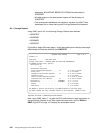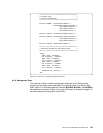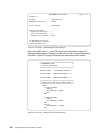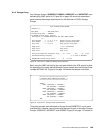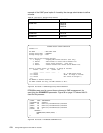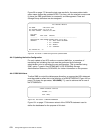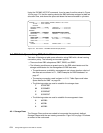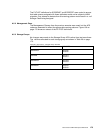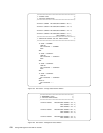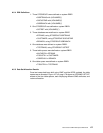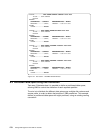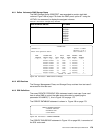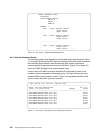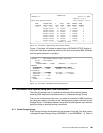
174 Storage Management with DB2 for OS/390
Using the IDCAMS LISTCAT command, it can be seen from this extract in Figure
104 on page 174, that the catalog retains the SMS attributes assigned at data set
allocation time, and shows the space attributes that were allocated in cylinders:
Figure 104. Test Case 3 - IDCAMS LISTCAT Display Extract
A.5 DB2 Table Spaces Using SMS, Coded Names
Test case 4 illustrates a table space allocation using SMS with a formal naming
convention policy. The following environment applies:
• There are three DB2 subsystems; DB2T, DB2D, and DB2P.
• The following conditions are agreed upon by the DB2 administrator and the
storage administrator for the management of DB2 data sets:
• The performance, availability, management and volume location criteria of
the data sets are shown in 6.1, “SMS Examples for DB2 Databases” on
page 47.
• The naming convention used is shown in 6.1.8, “Table Space and Index
Space Names for SMS” on page 56.
• The following codes are used to establish the storage class:
T SCDBTEST
M SCDBMED
F SCDBFAST
C SCDBCRIT
• The following codes are used to establish the management class:
0 MCDB0
1 MCDB1
2 MCDB2
A.5.1 Storage Class
The Storage Class routine was coded to incorporate the previously defined
Storage Classes with the new naming convention. Figure 105 on page 176 shows
an extract of the code used.
CLUSTER ------- DB2D.DSNDBC.BTRANS.CHECKS.I0001.A001
IN-CAT --- UCAT.VSBOX09
HISTORY
DATASET-OWNER------HAIMO CREATION--------1999.048
RELEASE----------------2 EXPIRATION------0000.000
SMSDATA
STORAGECLASS ---SCDBTEST MANAGEMENTCLASS-MCDB21
DATACLASS --------(NULL) LBACKUP ---0000.000.0000
ALLOCATION
SPACE-TYPE------CYLINDER HI-A-RBA------1049149440
SPACE-PRI-----------1423 HI-U-RBA---------1474560
SPACE-SEC------------712
VOLUME
VOLSER------------RV3CU3 PHYREC-SIZE---------4096



